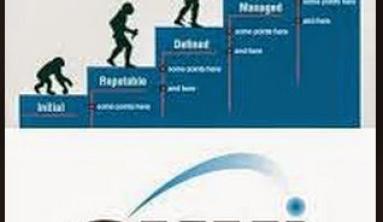For tech companies, in particular, this often means choosing a software development partner.
Outsourcing your software development team is always a tempting option, but doing it right comes down to covering all the details.
Depending on the kind of software project you are working on, how you source and work with a software development partner can be quite different.
It’s important to follow a defined process when outsourcing. This way you can maintain control over the quality of work you receive.
The following guide will cover several steps involved in choosing your software development partner and the outsourcing process in general. Check it out below! Use it to shape your process and hire the best remote talent.
What Is a Software Development Partner?
A software development partner is a technical party —- often a company or group of IT professionals — who can help you deliver your software project successfully.
Software development partners are typically outsourcing agencies that are employed by tech startups to alleviate the costs and other burdens associated with hiring developers on your own.
More likely than not, a reasonably priced software development partner will have the tools and knowledge to build your app or software product with only a detailed understanding from you and/or your associates about the project you’re trying to build.
Making sure your software development partner has a full comprehension of your project is probably the most critical part of having a successful software product.
After this is sorted, your software development partner can do the rest.
Why Companies Look for a Software Development Partner?
Companies look for a software development partner for a number of reasons:
- There are not enough resources to augment the staff at your company.
- The project is short-term and the company does not want to hire permanent, full-time developers.
- The company’s in-house team may not have software professionals with sufficient experience in the tech needed to complete the project.
- A software development partner can guarantee results on time and on budget.
Any of the above reasons signify that outsourcing a software development partner might be your best solution.
11 Steps for Choosing a Software Development Partner
If you’ve decided that a software development partner is the optimal route for your project, then you have to be intentional in how you go about choosing one.
These steps will serve as guidance in choosing a software development partner.
1. Assess Your Project
Before beginning your search for partners, it’s important to take a step back and evaluate your project.
Take steps to consider how outsourcing will factor into your project. Break down your goals for this specific project, and try to quantify specific benchmarks that you want to meet.
Define the reasons why you are trying to outsource some or all of your project to a software development partner.
Is it related to the costs of in-house development? Then make sure your budget is appropriate for hiring high-quality talent.
Are you lacking certain skills from your staff? Then make sure you clearly communicate the skills you are seeking.
2. Define the Project Scope
Set clear goals and expectations for what you want your finished project to look like.
Frame the exact requirements necessary for you to be satisfied with your project, but maintain realistic expectations along the way.
Take into account the resources you plan on using so you can have a solid understanding of what is possible.
To get a visual outlook of what your project will look like, it might be useful to craft mock-ups and visual layouts of your software in this planning stage.
It may sound like a lot of work, but this can be especially useful when presenting your project proposal to potential partners.
3. Define the Time-Frame of The Project
This is where you determine when you want your project done. Without software development experience, it can be hard to come up with a definitive time frame for your project.
If you are having trouble defining your project in time-based goals, don’t be afraid to rely on your software development partner to help you plan out this aspect of your project.
Once you have an idea of how much time you need to accomplish your overarching project goals, you can begin to break down your project into parts.
Some project managers set out a general outline of how long each part of your software project should take to complete. A lot of this can change as you begin to collaborate with your software development partner, so be flexible.
4. Define Your Budget
Now it’s time to layout your budget for the year. Determine how much of your budget will be allocated to your software development partner.
Knowing how valuable your product is will be key in calculating your budget. Some in-depth analysis will be required to do this.
Again, this is another situation where your software development partner can help with any ambiguity. For sourcing quality technical talent, money isn’t everything; but it certainly matters.
Prioritize quality over quantity when budgeting for your software development partner and have more confidence in the finished product as a result.
5. Plan Staff Resources
When planning your project, don’t forget to factor in the effect that outsourcing will have on your internal staff. Map out how your staff will be affected by outsourcing parts of your operations.
Consider whether you will need to utilize your own, other managers, or internal developers’ time and energy in order to coordinate with your outsourced team and complete the project.
You can estimate how many hours of work different aspects of the project will take from your various staff. The goal is to strategically plan out how your project will affect your broader company operations.
Successfully integrating your software development partner into your company's process and structure will naturally improve business workflow.
6. Define Your Technical Stack
Identify which programming languages and technologies you will be using for your software project. List them, and consider making a brief list describing to what extent they will be used within your proposed project.
In effect, you’ll be better able to communicate your needs with potential software development partners and find the best developers for your project.
7. Consider Different Types of Outsourcing
Having defined the scope of your project, it’s time to start planning how you will outsource developers. There are multiple ways to do this.
- Staff Augmentation
By hiring a software development partner via staff augmentation, you take on external developers for a contracted amount of time. Internal management will oversee the staff and ideally, the outsourced staff will work closely with the rest of the team.
Using staff augmentation has a multitude of advantages, including being able to contract and expand your talent as your project progresses.
Many technical managers like that this option offers more flexibility, control, and scalability.
- Project-Based
In a project-based outsourcing model, you hand over control of the project to your software development partner.
Reduced control works for some people, but this model requires more scrutiny when choosing a partner.
Giving full responsibility to your software development partner requires maximum assurance that your partner is credible and experienced.
Make it a priority to become acutely familiar with any potential software development partners you wish to take on for your outsourcing needs. Trust is key here.
8. Location of Outsourced Talent
Where you source your software development partner from can be quite important. Geographical differences can drastically change how remote teams operate.
Factors like language, time zone differences, and culture make a large impact on day-to-day business.
Here are a few different types of location-based outsourcing:
- Onshoring
Onshoring references sourcing remote talent from within your own country. Those who live in the United States, a country with a characteristically strong currency, will have the most expensive onshore outsourcing options.
Though expensive, onshoring means you will have little to no barriers when it comes to business processes.
You will not have to worry about time zones or language barriers, making onshoring a great choice for companies who have the resources to use this type of outsourcing.
- Nearshoring
Nearshoring defines outsourcing from nearby countries. Locations like these manifest lower development costs while retaining time zone similarities.
Like onshoring, nearshoring often means language or cultural barriers are not a problem. Nearshoring can be a great compromise for companies wishing to outsource talent in an affordable and easily maintainable way.
A surplus of American companies has started outsourcing development from countries in South America like Brazil, Argentina, and Peru. Near-fluent English skills, affordable prices, and high-quality developers have made these countries an attractive option for nearshoring.
- Offshoring
Offshoring involves outsourcing to distant countries with very low costs like India or China.
For technical and/or business managers, this can be an alluring option for companies wishing to achieve large amounts of work for small amounts of money, but can also come with a series of risks and hurdles to deal with.
As an inverse to onshoring and nearshoring, offshoring involves time zone differences and language barriers. But not all offshore development partners have these issues.
A lot of these downsides can be less of a problem for companies that don’t care to have full control over their project.
Project-based outsourcing is a viable choice for those who choose an offshore location for their software development partner.
9. Compare Potential Partners
At this point, you should have a firm understanding of how outsourcing will be implemented into your company's structure. Once you have a clear picture of this, it makes sense to officially start searching for your software development partner.
There are countless places to search for developers for hire. Price and reliability will be large factors in your search.
- Freelance Marketplaces
Online marketplaces give you the world at your fingertips. They permit individuals to sell their services and streamline the process of communication and payment through their platforms.
Websites like Fiverr, UpWork, and Toptal all make the process of finding a developer easy. Keep in mind results can vary in quality and flexibility isn’t often these platforms’ strong suits.
- Software Development Firms
A software development team can provide more flexibility for your project. Hiring through a firm is a fantastic way to ensure you are getting high-quality talent, where you can have as much or as little control over your software development partner as you want.
A lot of firms can be pricey, but Trio is one example of a smaller development firm shaking things by giving a premium development experience alongside reasonable costs.
10. Contact and Evaluate
After getting an idea of what type of software development partner you’re looking for, it’s up to you to make the first contact. Pay attention to how well they communicate, and factor this into decision-making.
Interview potential partners to narrow down top candidates. Use creative methods like coding challenges to recognize talent. Alternatively, some software development partners will let you trial their developers for a short period of time.
Naturally, evaluating your software development partner before hiring is paramount in choosing the right outsourcing team.
11. Hire a Partner
Given that you’ve evaluated your software development partners and chosen the right fit, all that's left to do now is prepare the contracts to be signed.
These are exciting times. Keep consistent contact with your outsourcing partner after signing, and use your timeline to decide when to start the project.
Hiring a software development partner can be a big step for a lot of companies.
Partnering with a firm or developer who is flexible and affordable empowers you to accelerate development while cutting costs.
Conclusion
As you can see, there are many steps involved in hiring a software development partner.
Similarly, several circumstances and conditions will determine the software development partner you use such as cost, location, and flexibility.
Via www.trio.dev/blog





